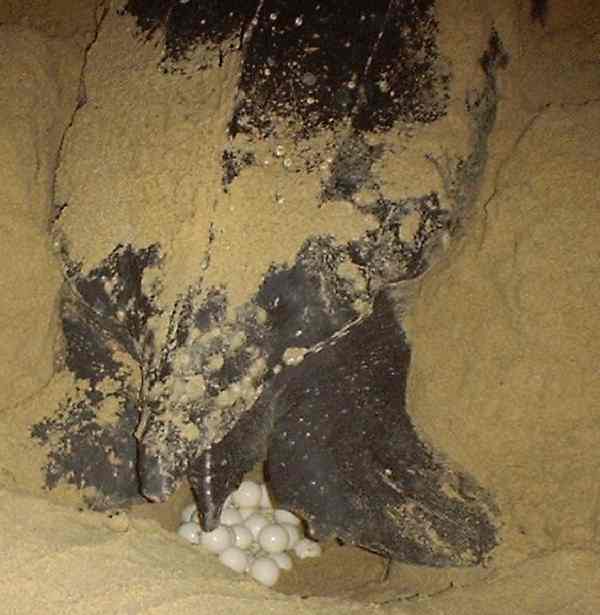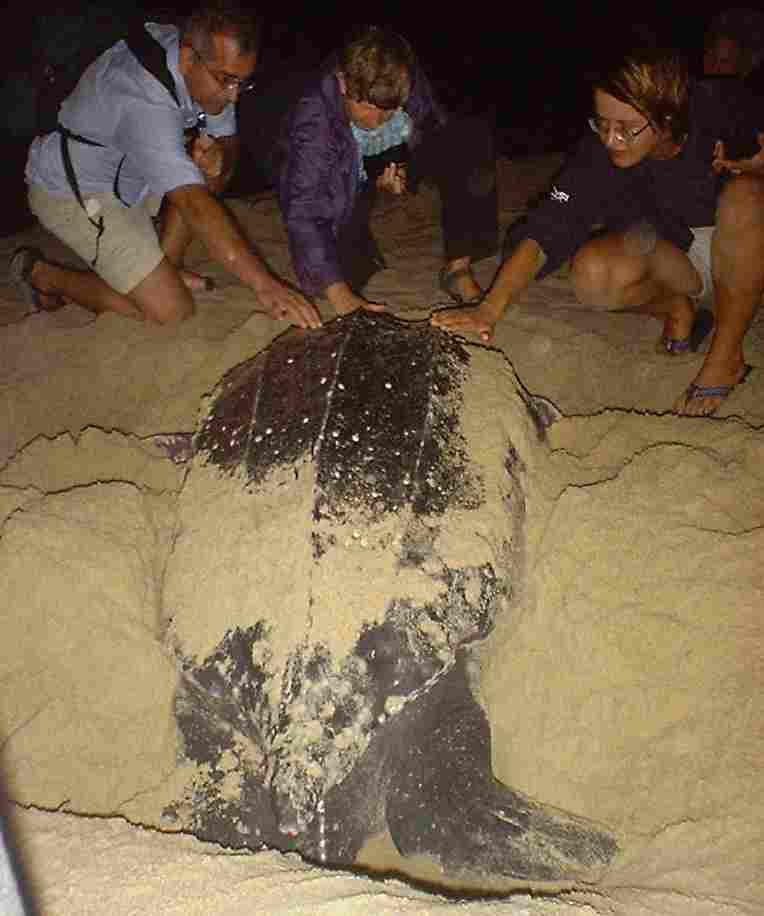 Their backs do feel like soft, moist leather.
Their backs do feel like soft, moist leather.March through September is the season for the leatherback turtle, the largest
marine turtle in the world, to return to the site of their birth to lay their
eggs. These turtles are 5 to 7 feet in length, and can weigh up to 1100 pounds.
We were lucky enough to go on a guided tour with our friend Jesse James to the
Matura beach on the east coast of Trinidad.
Jesse picked us up around 5 pm at Chaguaramas Bay. The drive to Matura Beach took about 3 hours. At the beach we were introduced to Natasha, our Nature Seekers guide. The turtles come up out of the sea at night, and are cautious and nervous at this stage. If loud noises or bright lights disturb the turtles they often go back into the sea without making a nest. So we waited to hear from the beach patrol that a turtle had been sited. It took about waited 45 minutes until someone from the beach patrol told Natasha where we could find one of the turtles. Some nights there can be up to 80 turtles laying eggs on this one beach. We walked about 1/2 mile up the beach to find a turtle digging a very deep hole. Since she was already digging we were allowed to quietly approach her from the side. We watched her dig for nearly an hour. The patrol had to aid this turtle with the hole digging because she was unable to effectively use both of her rear flippers. To our surprise she did not mind the help, she seemed to appreciate it.
The leatherback will begin to lay eggs at the age of 25 years. They will lay
eggs every 2 or 3 years. The egg laying process happens 5 to 7 times over the
period of several months. Each time she will lay 80 to 100 eggs in the cool
sand.
After she was satisfied with her hole, then the eggs began to drop. At this
point she is in a trance and the beach patrol began to take measurements and
tag her in two different spots. This turtle was over 5 feet long, not including
her head. We were allowed to touch her and take photos of her after the beach
patrol finished their work.
Once the eggs are laid then she began the camouflage process of filling and
covering the hole. We didn't touch her or take any more photos at this point.
After she has hidden the hole she will slowly make her way back to the sea.
We were amazed that she could accomplish the whole procedure only using her
back flippers and not seeing what she was doing. In about 60 days the tiny baby
turtles will emerge from the sand and begin their perilous run to the sun, a
journey with many predators. Only about 1 or 2 percent of the babies will survive
to adulthood.
The rain was starting so we headed back down the beach to where the car was parked. Jesse made us coffee and sandwiches and then we started the long drive back to Chaguaramas Bay. We had a lot of fun and we were very exhausted when we returned back home at 11:30 PM.
According to my brother, turtles symbolize steady determination in the Native American culture. This is an interesting thought, and I now understand what this means!
-SLC


